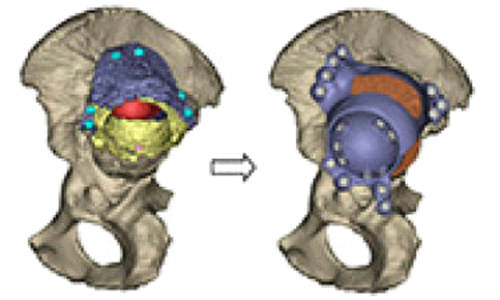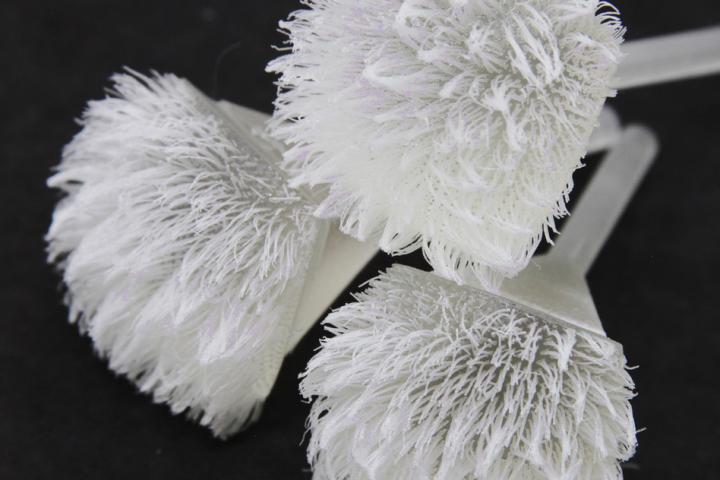Doctors and scientists in Southampton have completed their first hip surgery with a 3D printed implant and bone stem cell graft.
Pre and post-operative hip. The purple area is the 3D-printed implant and the oragne is the stem cell graft. Photo Credit: Image courtesy of University of Southampton
The 3D printed hip, made from titanium, was designed using the patient’s CT scan and CAD CAM (computer aided design and computer aided manufacturing) technology, meaning it was designed to the patient’s exact specifications and measurements.
The implant will provide a new socket for the ball of the femur bone to enter. Behind the implant and between the pelvis, doctors have inserted a graft containing bone stem cells.
The graft acts as a filler for the loss of bone. The patient’s own bone marrow cells have been added to the graft to provide a source of bone stem cells to encourage bone regeneration behind and around the implant.
Southampton doctors believe this is a game changer. Douglas Dunlop, Consultant Orthopaedic Surgeon, conducted the operation at Southampton General Hospital. He says: “The benefits to the patient through this pioneering procedure are numerous. The titanium used to make the hip is more durable and has been printed to match the patient’s exact measurements — this should improve fit and could recue the risk of having to have another surgery.
“The bone graft material that has been used has excellent biocompatibility and strength and will fill the defect behind the bone well, fusing it all together.”
Over the past decade Mr Dunlop and Professor Richard Oreffo, at the University of Southampton, have developed a translational research programme to drive bone formation using patient skeletal stem cells in orthopaedics.
The graft used in this operation is made up of a bone scaffold that allows blood to flow through it. Stem cells from the bone marrow will attach to the material and grow new bone. This will support the 3D printed hip implant.
Professor Oreffo comments: “The 3D printing of the implant in titanium, from CT scans of the patient and stem cell graft is cutting edge and offers the possibility of improved outcomes for patients.
“Fractures and bone loss due to trauma or disease are a significant clinical and socioeconomic problem. Growing bone at the point of injury alongside a hip implant that has been designed to the exact fit of the patient is exciting and offers real opportunities for improved recovery and quality of life.”
For the patient, Meryl Richards, from Hampshire, the procedure means an end to her hip troubles. In 1977 she was involved in a traffic accident and since then has had to have six operations to mend her hip.
She says: “The way medicine has evolved is fantastic. I hope that this will be the last time that I have to have a hip operation. I feel excited to have this pioneering surgery and I can see what a benefit it will have to me.”
Story Source:
The above story is based on materials provided by University of Southampton.




